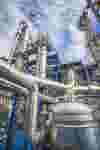What Is Vapor Mechanical Compression?
Mechanical Vapor Recompression (MVR) is a technique increasingly adopted in various industries, distinguished by its multiple uses and considerable benefits.
Design and Features
At the heart of MVR, an ingenious process allows for the mechanical compression of vapor to concentrate and dry various products while achieving significant energy savings. This process also recovers lost thermal heat, contributing to reduced energy costs and environmental impact. By exploiting previously dissipated heat, MVR promotes more eco-efficient production.
Additional Benefits
MVR offers a series of additional advantages. It can capture and reuse thermal energy in chemical reactions, which not only reduces overall energy consumption but also increases the efficiency of industrial processes. Moreover, MVR can compress toxic vapors for safe disposal, thus mitigating health and environmental risks.
Furthermore, the recovery of valuable products from compressed vapors is another major asset. This process minimizes resource losses while optimizing production profitability.
Overall, it is versatile in improving energy efficiency, recovering lost heat, and protecting the environment.
Conclusion
In summary, MVR proves to be a versatile and efficient technique. By improving energy efficiency, recovering lost heat, and protecting the environment, it stands out as an indispensable technology for modern industries seeking to combine performance with sustainability.






